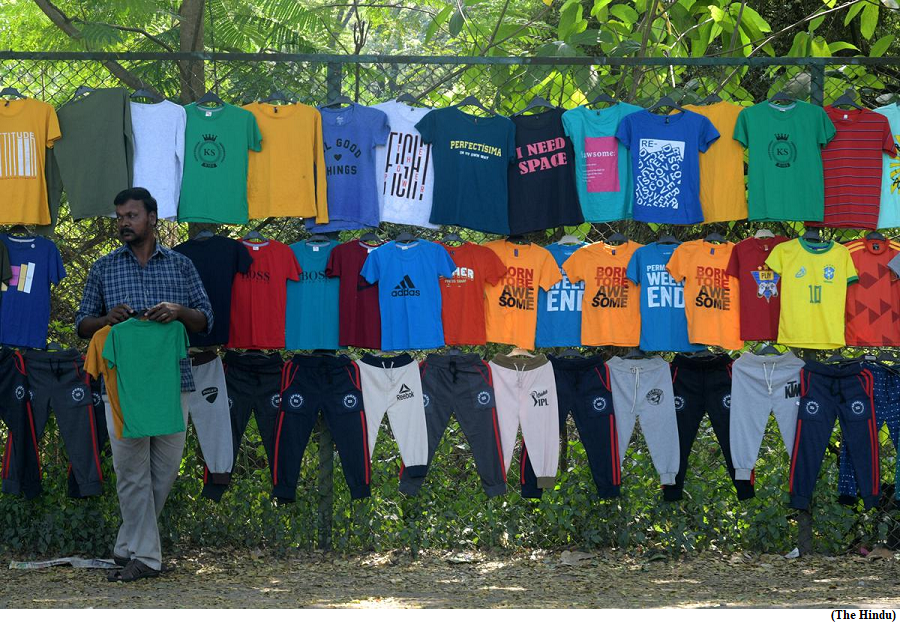The piezoelectric effect in liquids (GS Paper 3, Science and Tech)

Why in news?
What is the piezoelectric effect?
Why is the effect in liquids surprising?
- The reason the piezoelectric effect has only been expected in solids thus far is that the body being squeezed needs to have an organised structure, like the pyramids of quartz. Liquids don’t have such structure as they take the shape of the container.
- Physicists explain the effect using a combination of Hooke’s law, that the force required to squeeze an object is linearly (i.e. non-exponentially) proportional to the amount of squeezing and the properties of dielectric materials.
- These are materials that don’t conduct electricity but whose electrons are still mildly affected by an electric field. Hooke’s law is not clear when the body isn’t very compressible.
What new applications are possible?
- The discovery opens the door to applications that have previously not been accessible with solid-state materials, and room-temperature ionic liquids are more readily recyclable and in many instances pose fewer environmental issues than many currently used piezoelectric materials.
- The liquids also displayed the inverse piezoelectric effect: they became distorted when an electric charge was applied.
- Having a theory to explain the liquids’ behaviour could reveal why these liquids behave the way they do, which in turn could reveal better ways to develop newer applications.
India falls 6 spots to rank 144 in Passport Index 2023
(GS Paper 3, Economy)
Why in news?

Findings on India:
- As compared to the 138th rank out of 199 countries in 2022, India ranked 144 with a mobility score of 70 in 2023. This is the largest global fall in the index in 2023.
- The sharp fall in India's ranking has been attributed to the change in European Union's policy. Several nations, like Serbia, have been under pressure to introduce visa requirements for Indian nationals.
- The index also showed drops in the scores of other Asian economies like Vietnam, Indonesia, China, and Thailand.
Key Highlights:
- The ranking was topped by the United Arab Emirates (UAE) with a mobility score of 181. It was followed by Sweden, Germany, Finland, Luxembourg, Spain, France, Italy, the Netherlands and Austria, with a joint mobility score of 174.
- South Korea had the highest score of 174 in South Asia and ranked 12th on the list. Japan, with a score of 172, ranked 26th. Almost all the other Asian countries saw a fall in their rankings.
What is the Passport Index?
How has India's score changed throughout the years?
- India's mobility score was 71 in 2019. It rose to 73 in 2022, riding the wave of increased mobility, but now it has again fallen to 70 in 2023. The ranking last year was 138.
How is the mobility score calculated?
- Mobility Score is the total number of countries that can be easily accessed with a given passport.
- It is calculated by adding the total countries which allow Visa-free travel, Visa-on-arrival, eTA, and eVisa issued within three days to a passport.
How has the Indian passport ranked in other indices?
The issues with the Quality Control Orders for fibres
(GS Paper 3, Economy)
Why in news?
- Quality Control Orders (QCO) have been issued for fibres; cotton, polyester and viscose that constitute the basic raw materials for majority of the Indian textile and clothing industry.
- While the standards were available earlier too, these are now revised and made mandatory for a few, and yet to be finalised for others.
- International manufacturers of these fibres, who supply to India, are also mandated to get a certificate from the Bureau of Indian Standards (BIS), which is the certifying authority for the QCOs.

Why are fibres covered under QCOs?
- The Indian textile and clothing industry consumes both indigenous and imported fibres and filaments.
- The imports are for different reasons; cost competitiveness, non-availability in the domestic market, or to meet a specified demand of the overseas buyer.
- The main aim of the QCO is to control import of sub-quality and cheaper items and to ensure that customers get quality products.
- The entire supply chain, from the textile manufacturers to exporters, has so far focused on quality standards prescribed by the buyers.
What challenges does the new mandate bring?
- India imports annually 50,000 - 60,000 tonnes of viscose fibre and its variants such as Modal and Tencel LF from nearly 20 countries. In the case of polyester, almost 90,000 tonnes of polyester fibre and 1.25 lakh tonnes of POY (Polyester Partially Oriented Yarn) are imported annually.
- The overseas fibre manufacturers sell not only to India but to other countries too. The supply of some fibres to India is in small quantities. Getting the certificate from the BIS involves a cost and and hence not all are interested in getting the certificate.
- The Indian textile manufacturers who are dependent on these suppliers for the raw material will have to either look at other suppliers or lose orders.
- Furthermore, BIS officials have to visit the manufacturing unit abroad before issuing the certificate and this process is yet to be completed for all suppliers who have applied for the BIS registration.
- There is no clarity on the fibres that were shipped before the certification and which will reach India in the coming days.
What is the way forward?
- Be it viscose or polyester, some varieties of the fibre have special functional properties and separate HS (Harmonised Commodity Description and Coding System) code when imported. But, these are bundled in the QCO and thus have uniform quality standards.
- The textile industry imports just small quantities of such fibres and restricting its availability will deny Indian consumers of niche products. The textile industry is of the view that import of speciality fibres that are used as blends with other fibres should be made available without restriction.
- Also, any overseas applicant for the BIS certificate should get it without delay after inspection. Several textile units use lower grade fibres that are generated from rejects and wastes and these are not covered under the QCO. There is also a fear of costs going up for basic garments.
- Further, polyester spun yarn mills in the MSME sector need capital support to set up labs to test products. The QCO should be implemented only after the ambiguities are cleared and the anomalies set right, says the industry.
- The BIS standards are mandatory for viscose staple fibre from March 29 and for five polyester products, including polyester staple fibre and polyester spun yarn from April 3.




